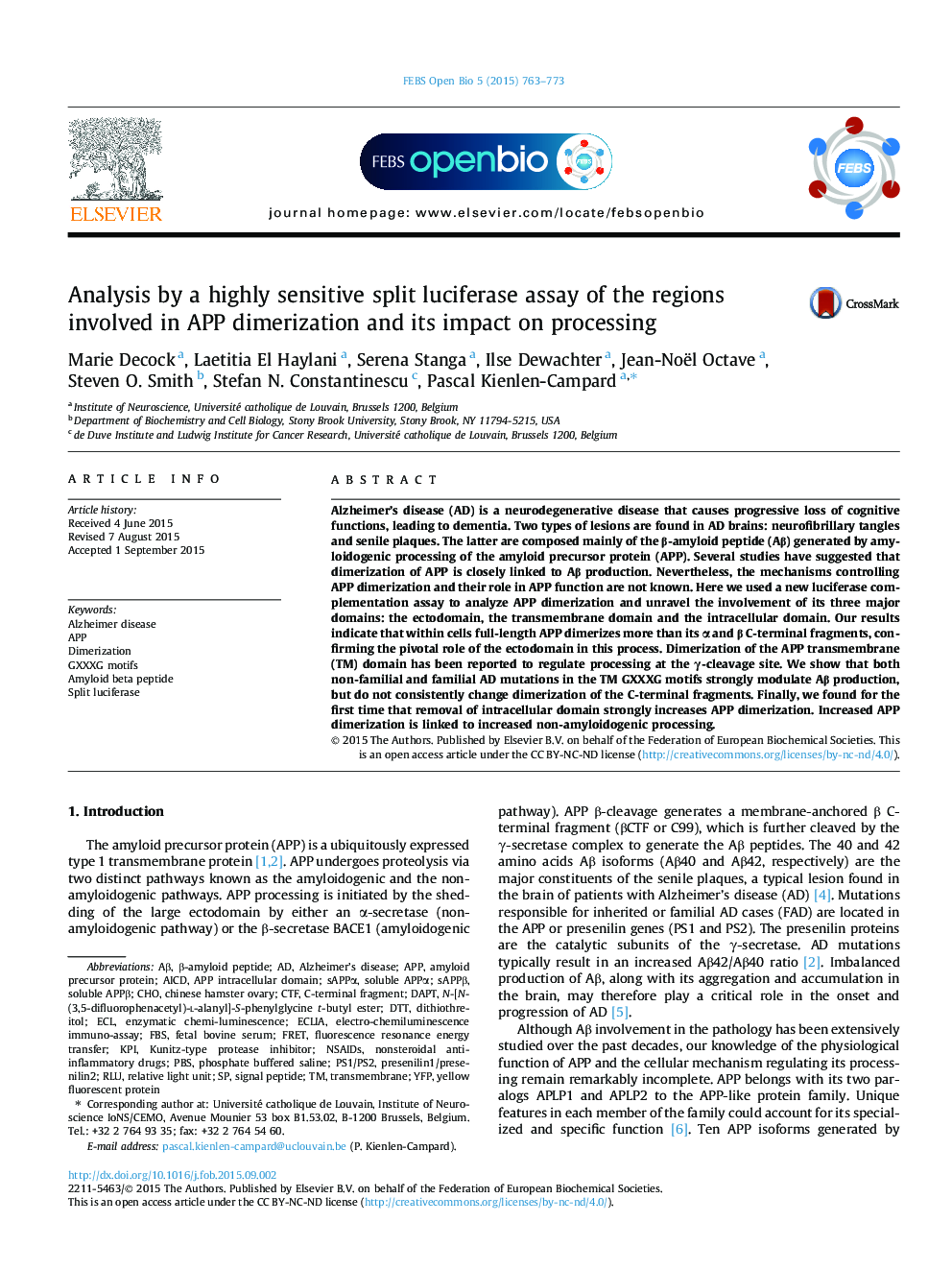| Article ID | Journal | Published Year | Pages | File Type |
|---|---|---|---|---|
| 1981642 | FEBS Open Bio | 2015 | 11 Pages |
•Amyloid precursor protein (APP) dimerizes more than its C-terminal fragments in cells.•Mutations of membrane GXXXG motifs affect Aβ production but not APP dimerization.•Deletion of the APP intracellular domain increases APP dimerization.
Alzheimer’s disease (AD) is a neurodegenerative disease that causes progressive loss of cognitive functions, leading to dementia. Two types of lesions are found in AD brains: neurofibrillary tangles and senile plaques. The latter are composed mainly of the β-amyloid peptide (Aβ) generated by amyloidogenic processing of the amyloid precursor protein (APP). Several studies have suggested that dimerization of APP is closely linked to Aβ production. Nevertheless, the mechanisms controlling APP dimerization and their role in APP function are not known. Here we used a new luciferase complementation assay to analyze APP dimerization and unravel the involvement of its three major domains: the ectodomain, the transmembrane domain and the intracellular domain. Our results indicate that within cells full-length APP dimerizes more than its α and β C-terminal fragments, confirming the pivotal role of the ectodomain in this process. Dimerization of the APP transmembrane (TM) domain has been reported to regulate processing at the γ-cleavage site. We show that both non-familial and familial AD mutations in the TM GXXXG motifs strongly modulate Aβ production, but do not consistently change dimerization of the C-terminal fragments. Finally, we found for the first time that removal of intracellular domain strongly increases APP dimerization. Increased APP dimerization is linked to increased non-amyloidogenic processing.
